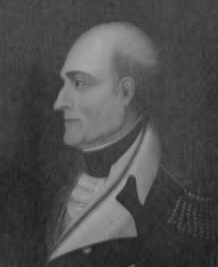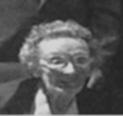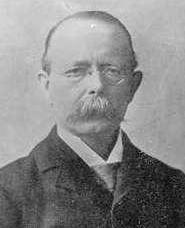|
Anthologies of our Fenian Ancestors
Hand, Edward (1744 - 1802)
 Edward Hand studied medicine at
Trinity College, Dublin and afterward enlisted
as a surgeon's mate in the Royal Irish Regiment. In 1767
he was sent to
America with his regiment to serve on the Pennsylvania
frontier. Having reservations about enforcing Britain's
despotic colonial policies in
America, he resigned
his commission in 1774 and settled in Lancaster, Pennsylvania were he
practiced medicine. Edward Hand studied medicine at
Trinity College, Dublin and afterward enlisted
as a surgeon's mate in the Royal Irish Regiment. In 1767
he was sent to
America with his regiment to serve on the Pennsylvania
frontier. Having reservations about enforcing Britain's
despotic colonial policies in
America, he resigned
his commission in 1774 and settled in Lancaster, Pennsylvania were he
practiced medicine.
At the onset of the Revolutionary War in
1775 he was commissioned a Lieutenant Colonel in the
1st Pennsylvania Rifle Regiment. He served at the Siege of
Boston, the Battle of Long Island, and the battles of Trenton and
Princeton. He was promoted to Brigadier General in 1777 and placed in
command of the American forces at Fort Pitt in western Pennsylvania . He
was given command of a brigade of
light infantry in Lafayette's Division in 1780 and in February of 1781
was appointed Adjutant
General of the Continental Army.
link to biography
Haslet, Colonel John (1727 - 1777)
John Haslet was born in Straw, Dungiven, Co. Derry, Ireland the
son of Joseph and Ann Dykes Haslet. He attended the University of
Glasgow in Scotland where he earned his degree in divinity. He was
ordained a Presbyterian minister in 1752. He married Shirley
Stirling, the daughter of the Presbyterian minister in 1750. They
had one daughter Mary who was born in 1752. His wife died during
childbirth.
He left Ireland in 1757, settled in
Pennsylvania
and shortly thereafter was
commissioned a Captain in the
Pennsylvania Militia.
He relocated Milford, Delaware
in 1764 where he served as a
Presbyterian minister and a medical doctor.
He was a veteran of the French and Indian War and an officer of
the Continental Army in the American Revolution, serving as the
first Colonel of the 1st Delaware Regiment. He fought in a number of
battles and
skirmishes including the battles of
Brooklyn, Trenton and Princeton. . He
was killed in action at the Battle of Princeton.
-- link to biography
Haybyrne,
Patrick John (Circa 1841 - 1900)

Patrick J. Haybyrne was born in Dublin, Ireland circa 1841. He was a
barber by profession and a member of the Irish Republican Brotherhood
(IRB). His father, James Haybyrne was president of the Davis Club and a
member of the Young Ireland War Council in 1848.
Shortly after finishing a two-year stint in the British army he joined
the IRB. His barbershop in Thomas St. was used to store arms and
ammunition in preparation for the impending Fenian uprising in 1867. In a letter
to Thomas F. Meagher in the U.S. he stated that he and his comrades, 500
strong, were ready to fight and die for Ireland.
In December of
1865 he was arrested after the arms cache was found in his barbershop.
He was charged with treason -felony and sentenced to two years hard
labor.
After his
release in 1867 he came to New York where he established a hairdressing
business. For the rest of his life he remained committed to Irish
Freedom. He was a member of Clan na Gael and the Ancient Order of
Foresters. He was also a founding member of the Irish Revolutionary
Brotherhood Veterans Association and an active member of the Republican
Party in New York.
Heneghan, Síle (1909 - 2012)

Sίle Heneghan was born in Tontaleva,
Bundorracha, Co Mayo on November 2, 1909. She was a lifelong Irish
patriot who worked for and remained true to the 32-county Irish Republic
proclaimed on the steps of the General Post Office by Padraic Pearse on
Easter Monday 1916.
She was a young girl of six and a half when the
Easter Rising took place. The men and women of 1916 were her heroes.
Pearse, Connolly and Mac Bride were deaths she could recall.
Through the War of Independence
the Heneghan house was home to many a patriot who sought refuge while on
the run from the from the Black and Tans
Síle worked in Thurles in the early 1940's where she joined Cumann na
mBan.
In the mid 1950s she emigrated to United States. During her time
there she joined numerous Irish-American organizations including
Irish Northern Aid (NORAID).
As a member of NORAID she worked with George Harrison and Mike
Flannery, prominent leaders of the Irish Republican movement in the
U.S. During her year in the U.S. she corresponded with Republican
prisoners in Portlaoise prison and visited with them on her trips to Ireland.
In 1983, Sίle returned to Ireland, settling in Galway city.
For the rest of her active life she was a true and fearless supporter of
every Republican activity both at the local and national levels.
Every year she embarked on a pilgrimage to Wolfe Tone's grave in
Bodenstown, Co. Kildare to bear allegiance to the founder of Irish
Republicanism.
She
was deeply affected by
the deaths of the all the hunger strikers from 1940 through 1981
who died to preserve the Irish Republic proclaimed in 1916 and ratified
in 1919 by the First Dail Eireann.
Síle passed away on February 5, 2012 and is buried in
Leenane
Cemetery in West Galway.
Hodgers, Jennie Irene (1843 - 1915)
 Jennie
Irene Hodgers came to the United States from Ireland in the years
following the famine of the 1840's. She served for
three years in the 95th Illinois Infantry
Regiment of the Union
army under the name Albert Cashier and fought in some 40
battles and skirmishes including the
battles of Nashville, Mobile, and Vicksburg. Jennie
Irene Hodgers came to the United States from Ireland in the years
following the famine of the 1840's. She served for
three years in the 95th Illinois Infantry
Regiment of the Union
army under the name Albert Cashier and fought in some 40
battles and skirmishes including the
battles of Nashville, Mobile, and Vicksburg.
She was the only
woman to serve in the Civil War for the full time that
her unit served, the only woman to receive
a pension for her service during the Civil War and
the first woman to vote in Illinois.
She was buried in a
Union uniform upon her death in 1915, and her name is
inscribed on the Illinois monument at Vicksburg.
Jennie life was a difficult and lonely
journey driven by circumstances, mostly, beyond her control, yet, a
journey undertaken with grace, courage and fortitude. She earned the
respect of her peers in war and peace and a special place in the history
of the United States. ---
link to biography
Holland, John P. (1840 - 1914)
 John Philip Holland was
born Feb. 29, 1840 in Liscannor, County Clare, Ireland.
He was educated at Limerick, Holland taught school until
1872 in Ireland and in 1873 emigrated to the
United States. He was the father of the
modern submarine, who designed and built the first
underwater vessel accepted by the U.S. Navy. John Philip Holland was
born Feb. 29, 1840 in Liscannor, County Clare, Ireland.
He was educated at Limerick, Holland taught school until
1872 in Ireland and in 1873 emigrated to the
United States. He was the father of the
modern submarine, who designed and built the first
underwater vessel accepted by the U.S. Navy.
Settling in Paterson,
N.J., he taught there until 1879, when, with financial
support from the Irish Fenian Society (who hoped to use
submarines against England), he built the
Fenian Ram, a small sub
that proved a limited success in a test run. In 1895 his
J.P.
Holland Torpedo Boat
Company received a contract from the U.S. Navy to build
a submarine, and in 1898 the first truly
practical submarine, was launched. The U.S. government
ordered six more; similar orders came from England,
Japan, and Russia. Holland’s final years were marked by
litigation with his financial backers. One of his last
inventions was an apparatus designed to enable sailors to
escape from damaged submarines. ---
link to
biography
(Back
to
index
page) |